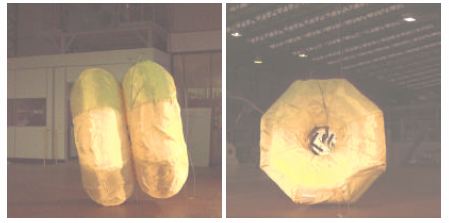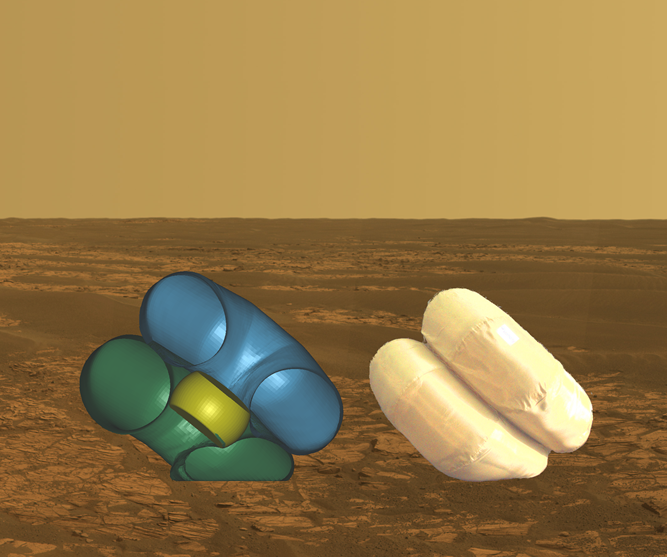Vorticity has considerable knowledge and expertise of both non-vented and vented airbag systems. Our expertise includes:
- Functional analysis and modelling of inflation and impact using LS-DYNA Monte Carlo modelling of landing on simulated planetary terrains
- Detailed design of the airbag envelope
- Analysis and specification of inflation systems and retraction/release devices and testing at both Earth atmospheric and low pressure
Our team has conducted successful tests at the NASA low-density facilities at Plum Brook and Johnson Space Center.
Non-vented airbags
Non-vented airbags are a simple system for protecting the payload during the landing event. Airbag attenuation systems function by converting the kinetic energy from the payload into energy stored within the gas contained in the envelope. The energy flow is reversed during the rebound and some of the energy stored in the gas is returned in the form of kinetic energy. If the airbag is sealed during its operation it is called non-vented. The MER and Pathfinder airbags were of this type.
Vented airbags
Vented airbags are more complex than non-vented systems, requiring a degree of control to ensure optimal operation. Vented airbags release the gas following compression and therefore remove the stored energy from the system which results in little or no rebound. UAV airbags are typical of this type. The function of vented airbags is very sensitive to ambient pressure. On Earth, when the bag vents, a release of a small proportion of the mass of gas reduces the internal pressure to ambient. The motion of the system is highly damped.
On
Airbags Case Studies



